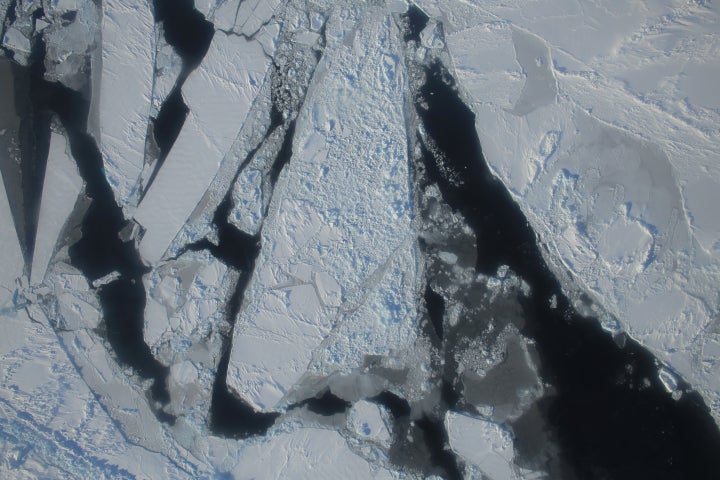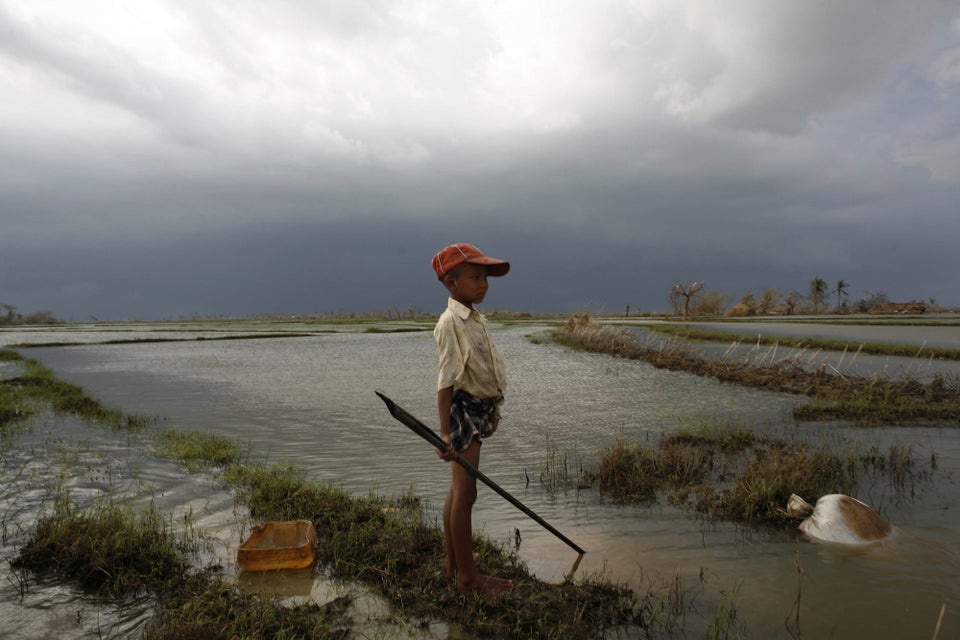- The maximum extent of sea ice was lower this year than it’s ever been.
- A warming Arctic has drastic implications for the rest of the world.
After yet another historically warm winter, Arctic sea ice levels have hit a new low.
That's according to the National Snow and Ice Data Center and NASA, which released findings Monday showing the maximum extent of sea ice in the Arctic Ocean, typically set near the start of spring after the ice has grown all winter -- is at the lowest it's ever been. Lower, even, than last year's levels -- which were themselves the lowest ever.
The largest extent of sea ice this year occurred on March 24, with a total area of 5.607 million square miles of ice. For comparison, the average maximum sea ice level, based on data from 1980-2010, is 6.04 million square miles, or 431,000 more square miles of ice than there was in 2016.

“I’ve never seen such a warm, crazy winter in the Arctic,” NSIDC director Mark Serreze said in a release accompanying the data. “The heat was relentless.”
A shrinking ice cap is important for a number of reasons, said Rafe Pomerance, a former climate negotiator currently serving as the chairman of Arctic 21 -- a network of organizations concerned about the fate of the Arctic -- and a member of the Polar Research Board of the National Academy of Sciences.
First, Arctic ice and snow helps reflect sunlight, directly aiding in cooling the planet. When that ice disappears, the sunlight is instead absorbed by the ocean, thereby contributing to warming and further melting the ice in a vicious cycle.
Second, as ice on land (primarily glaciers and ice sheets) in the Arctic melts as the temperature rises, it's responsible for a rise in sea level worldwide, thereby wreaking havoc on coastal communities around the world. Rising sea levels are further exacerbated because the Arctic Ocean -- as with all water -- expands as it is heated, and takes up more volume.
“What happens in the Arctic doesn't stay in the Arctic. The fate of Greenland is the fate of Miami.”
And third, there's a layer of permanently frozen soil in the Arctic -- known as permafrost -- that has two times more carbon trapped in it than is in the atmosphere, Pomerance said.
"As permafrost thaws -- which it is doing -- it will release massive amounts of carbon in the form of carbon dioxide and methane," Pomerance said, "which in turn will make it much more difficult to control the planet’s temperature."
While it's easy to dismiss climate change in the Arctic as unrelated to the rest of the world, the reality couldn't be further from the truth.
"What happens in the Arctic doesn't stay in the Arctic," added Pomerance. "The fate of Greenland is the fate of Miami."

But simply noting the historical disappearance of sea ice (and its accompanying problems) isn't enough. Now we need to act.
"The scientific community has done an unbelievable job at documenting these trends," Pomerance noted, "but we have to move from observation to action. And the action is in the form of a question. Governments now need to ask, with urgency, 'What is the Arctic we have to have?'"
In other words, we must determine how much we can allow the climate in the Arctic to shift before the cascading damages to the rest of the world spiral out of control.
"What are the functions we can't afford to lose?" Pomerance asked. "For example, can we allow the permafrost to thaw? Assuming we can't, what do we have to do to stop it? Can we allow Greenland to go? What do we have to do to stop it? Can it be stopped?"
"These are the questions that need to be asked -- and need to be responded to."
Clarification: This story has been updated to clarify that melting land-based ice contributes more to the rise in sea level than melting sea ice.

